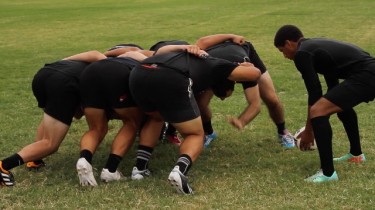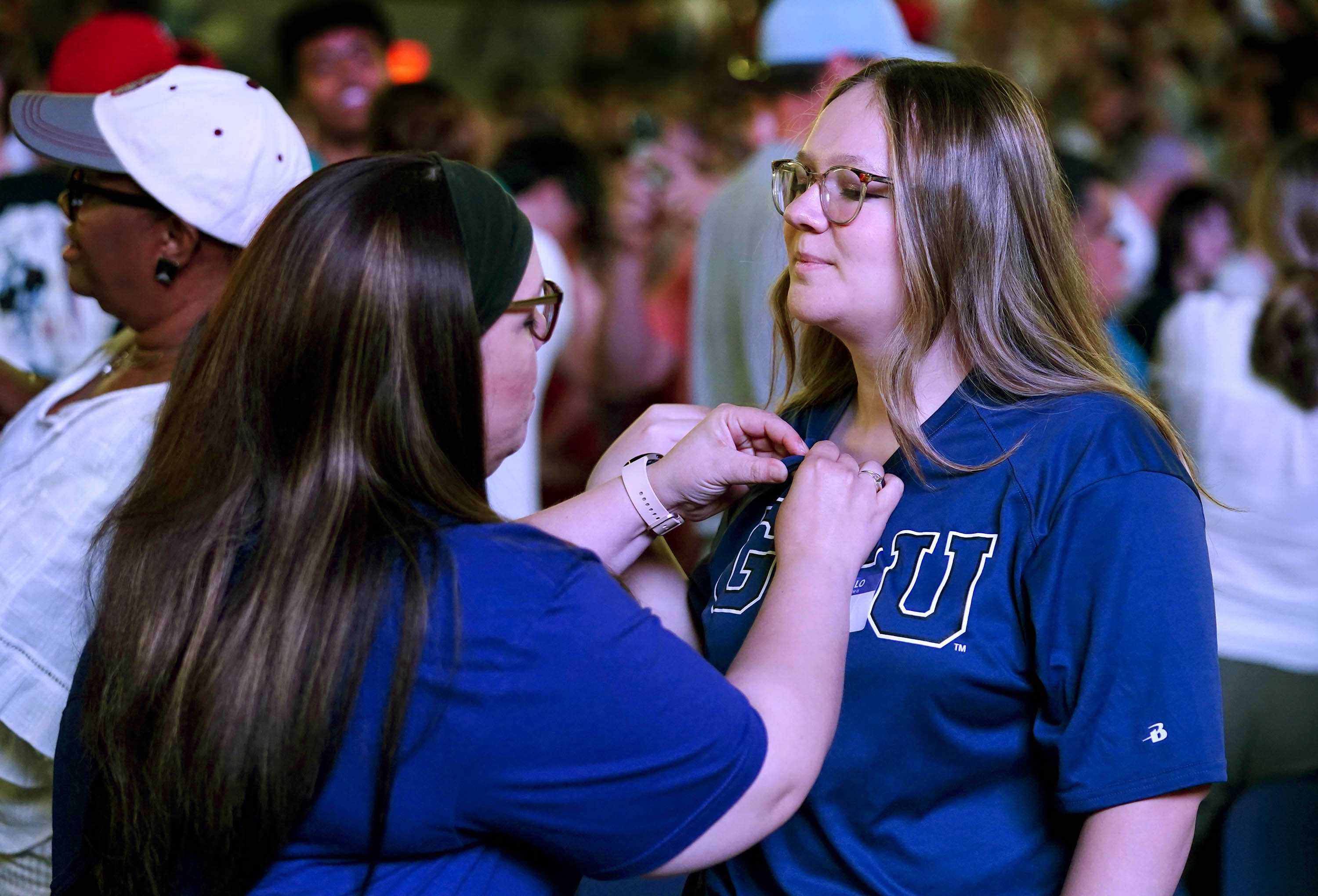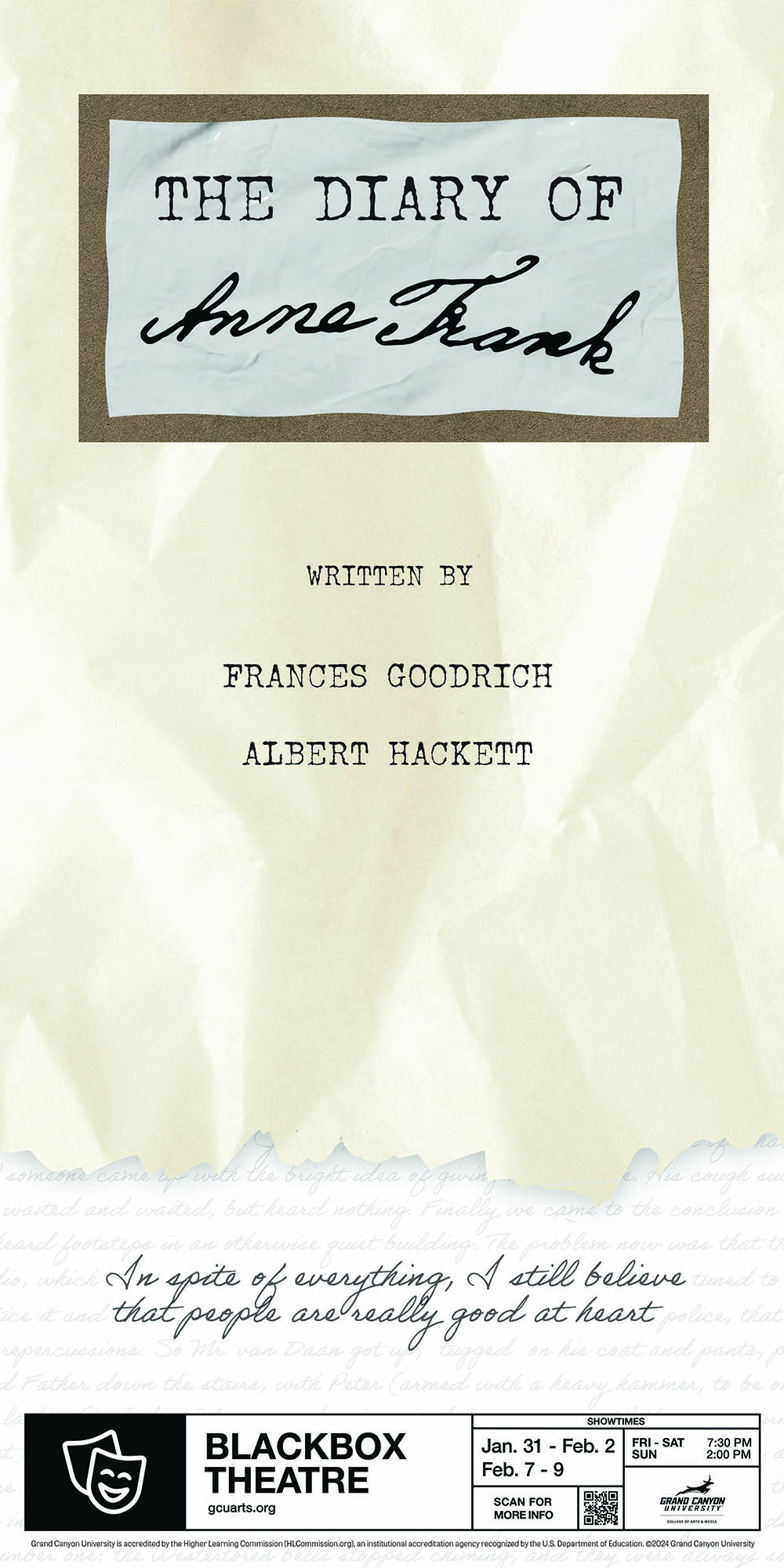By Rick Vacek
GCU News Bureau
So you’ve watched a rugby match and still aren’t quite sure what all those guys are doing as they knock each other down and then grapple for the ball on the ground. No problem. Consider this a new class at Grand Canyon University — Rugby 101 with your teacher, Professor Scrumface.
You’ll need to pass this class if you want to know what’s going on Saturday when GCU’s club rugby team faces Dixie State at 6 p.m. on the Intramural Field. Admission is free, food trucks will be lined up and GCU’s cheer and dance teams and Thundering Heard Pep Band will be performing. The pregame festivities are scheduled to begin at 5 p.m., and free blankets will be handed out to the first 100 attendees, as will free commemorative T-shirts (limited quantity).
And you can get your game face on early at a pep rally in front of the Student Union from 11 a.m. to 1 p.m. Friday.
Everyone at GCU knows how to raise their voices and get behind their Lopes, but most of them probably won’t know what to cheer for Saturday. Not to worry — this isn’t a test. In fact, we’ll even give you the answers, and you won’t need to listen to a long lecture.
Here, then, is the most enjoyable class you’ll ever take at GCU. It’s not accredited, but keep that between us.
HISTORY
The basics: Rugby is a cross between soccer and American football. All three are believed to have descended from an ancient Greek game called harpaston. But the game that rugby is today has its origin in 1823 at Rugby School in Rugby, England, where William Webb Ellis, “with fine disregard for the rules of football as played in his time at Rugby School, first took the ball in his arms and ran with it, thus originating the distinctive feature of the rugby game.”
Extra credit: The trophy for winning the world rugby championship is called the Webb Ellis Cup.
False myth: Rugby was invented by a dentist.
GEOGRAPHY
The basics: The rugby field is about 109 yards long from goal line to goal line and 76 yards wide compared to 100 yards by 55 yards for American football and 120 yards by 75 yards for soccer. However, Saturday’s match will be played on a field that’s about 65 yards wide because, well, that’s as wide as the Intramural Field is.
Extra credit: The rugby goalposts are similar in height and width to those in the National Football League — about 18½ feet wide with the crossbar about 10 feet up.
False myth: There are strategically placed thumbtacks on the field just to toughen these guys up a little.
MATHEMATICS
The basics: A rugby team consists of 15 players per side and can score points in four ways — a try (five points), a conversion (two), a penalty kick (three) and a dropped goal (three). A try is when a team gets the ball over the goal line and the conversion is the attempt to kick the ball through the goalposts after the try (same as the extra point in football). A penalty kick can be attempted from the spot where the penalty occurred and a dropped goal (also a kick) can be tried anytime a player has the ball and wants to try to drop-kick it through the goalposts. A drop kick is executed by dropping the ball and kicking it after it touches the ground, and on conversions and penalty kicks the kicker can use a tee.
Extra credit: The football term “touchdown” evolved from what a rugby player must do to score a try — the ball must be touched down to the ground after he crosses the goal line. And the conversion must be attempted from wherever the ball was touched down, so it’s important to try to do that as close to the middle of the field as possible to make the angle less severe.
False myth: The end zone celebrations in the NFL evolved from rugby. The only celebration these two sports have in common is the postgame refreshments.
PHYSICAL EDUCATION
The basics: The ball can never be passed forward, and once a player is tackled the “ruck” begins. The tackled player must let go of the ball, and then both teams try to gain possession. There are at least 100 rucks per match, and the rules of the ruck are way too complex to explain here. But the simple explanation is that players must not leave their feet, each player must “come through the gate” by entering the ruck behind the teammate at the back of the pack on his side … and this is rough stuff. “The tackle is not the physical part. It’s what happens after it,” said GCU Head Coach Ryan Kelly.
Extra credit: The scrum, a means of restarting play after a minor infringement, is like a faceoff in hockey or a jump ball in basketball and looks a lot like a ruck, but it’s two groups of eight players each trying to get the ball to their side. And then there’s the lineout, which occurs after the ball goes out of bounds. It’s like a throw-in in soccer, but in this case players can be lifted by teammates as much as 15 feet in the air to catch the ball.
False myth: Rucks and scrums are meant as a way for players to get to know each other a little better.
POLITICS
The basics: There’s one referee who has to watch all 30 players, and only one person from each team — the captain — can talk to him … and must address him as “sir.”
Extra credit: Rugby has spent years politicking to get back into the Olympics, and it finally will re-enter in the 2016 Games with sevens rugby — seven players per side on the same size field. To give you an idea how tough sevens is, games are divided into two seven-minute halves (yes, just seven minutes) compared to 40-minute halves in a normal match. “I’ve done a lot of sports, including MMA (Mixed Martial Arts), and there’s nothing as exhausting as sevens rugby,” Kelly said.
False myth: NFL player routinely call the referees “sir.” If you believe that, you know less about the NFL than you do about rugby.
FINAL EXAM
You read this far, so you passed. Congratulations! And if you need further instruction, assistant coach Danny Bell will be the public-address announcer Saturday and will be explaining what you’re watching.
“He’s got a great English accent,” Kelly said. “People will love him.”
Class dismissed. Professor Scrumface has another rugby match to watch.
Contact Rick Vacek at 602-639-8203 or [email protected].





























